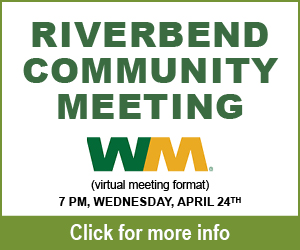Rohse: Tripped up by dance etiquette
Emily Post, America’s etiquette guru, should have been dethroned because of the etiquette she devised for ballroom and public dances: The etiquette of gals submissively following male partners as they lead us in the dance of their choice.
I speak from experience: Monument’s community dances in Eastern Oregon were a big part of our social life.
As a little kid, I went to dances with my parents and I couldn’t wait until I was old enough to be asked to dance — and get out there on the dance floor at the community hall where all the mamas watched from the sidelines.
I was about 11 or l2 when it happened: A young fellow asked me to dance.
At that time I had no idea as to Emily’s etiquette with regard to public dances. I knew that a guy came up to a gal and said, “May I have this dance?” Whereupon the gal usually couldn’t wait to say, “You bet.” At the end of dance the guy took the gal back to her seat, said, “Thank you,” and she said, “You’re welcome.”
But as to the etiquette during the dance — after the couple stepped out on the dance floor — I had no clue.
Yet, knowing that men held chairs for ladies, helped them with their coats, opened doors for them, assisted them in getting in and out of cars, I presumed that Emily’s dance etiquette would follow that pattern. Men would defer to their partners. As the couple stepped out on the dance floor, he would ask, “And what would my lady like to dance?” She would announce her choice whereupon they would glide around the floor like professionals.
Early on, before anyone had yet asked me to dance, had I been asked what I wanted to dance , I would have had trouble answering. I knew no dances. I didn’t know the cha-cha from the samba. I would have had to wing an answer with something banal, such as, “Let’s just dance to the music and have fun.”
The first time I was asked by a male partner to dance, I fully expected my partner, as we stepped onto the floor, to ask what I would like to dance. He did not do so.
How were my feet going to know what they were to do if they hadn’t been so advised before the start?
Since my partner did not ask me what I would like to dance, I would ask him. “What are we going to dance?” I said.
He looked at me as if he’d never before been asked that — as I am sure he hadn’t. He grinned, and muttered something about just “wingin’ it.”
I hadn’t the faintest idea as to what his feet were going to do — or what mine were supposed to do.
I don’t remember much about that dance. But apparently it wasn’t too much of a struggle. He asked me to dance again.
My two main concerns with this Emily Post etiquette of following some male leader through whatever steps he chose, was that my feet would never adapt to his. I’d never be able to guess what my leader was going to do.
And I was concerned, too, about the teaching methods our leaders might use. Might they not assume that role of leadership at all and let their partner drift aimlessly on the floor? Or would they perhaps assume a role akin to that of an circus animal trainer — and push and shove their partners as authoritatively as a circus trainer with a whip? I wanted ever so badly to dance — but I dreaded this Emily Post arrangement — although, indeed I would not have known a better method to suggest.
At Monument’s community dances, we usually danced with a different person almost every dance. Married couples, or those “going steady”, danced the first dance together, the dances before and after supper break, and Home Sweet Home. So we gals might dance with a myriad of different dancers during the evening — a different leader for every dance.
I have no idea how many dances comprised the evening, but it was many.
Our dances started at about 9 p.m. We danced until midnight, had supper break, danced again until perhaps 2 a.m. If no one wanted to go home, the men passed the hat and a collection was taken up for the band to play a bit longer. Often when I got home Mother was cooking breakfast.
Assuredly, not just us gals, but those male dancers — leading a different partner almost every dance — likewise had problems.
We gals often thought it would be fun to eavesdrop on a bunch of guys rehashing the previous night’s dance.
Mike would say to Bill, “You know, I danced with Gladys last night, and she’s a nice gal, but talk about a gal with three left feet. I don’t think we did one step together and she walked all over my new cowboy boots until I thought she was going to ruin them for sure.”
“Yeah,” says Pete,” but try dancing with Ginnie. She’s so hefty I can’t even push her around the floor. Instead she’s always pushing me. She does more leading then I do — and she’s bigger than I am.”
Then, Ralph chips in: “And that Phyllis is something else. She’s cute as can be but always she seems to be off in never-never land, listening to music I don’t hear. She’s waltzing and I’m doing the chicken scratch.”
All though high school I loved those Eastern Oregon dances — and gradually, I began to mature and understand and appreciate Emily’s etiquette with regard to our dance customs. Such as per this “Kitty Foyle” quote: “Dancing is the first way you learn to guess what a man is going to do before he does it.”
As we gals became better dancers, we prided ourselves on comfortably dancing with someone we’d never danced before, and stepping onto the floor and never missing a step through the entire dance. Our array of dancers taught us to quick think, taught us adaptability. It was good training — not only for our feet — but our brain. Our feet could almost instinctively follow our partner without our realizing it was happening.
And oh what fun those dances were. When you could glide around the floor with a smooth dancer who’d do intricate steps to try to trick your feet — and they’d respond without ever losing a beat.
Always in later years, after that Eastern Oregon training, when I’d dance with a stranger, and he would be surprised that I could follow him with perhaps no problem, I attributed it to my Eastern Oregon training— and Emily Post.
There was a gal who knew what she was doing.










Comments